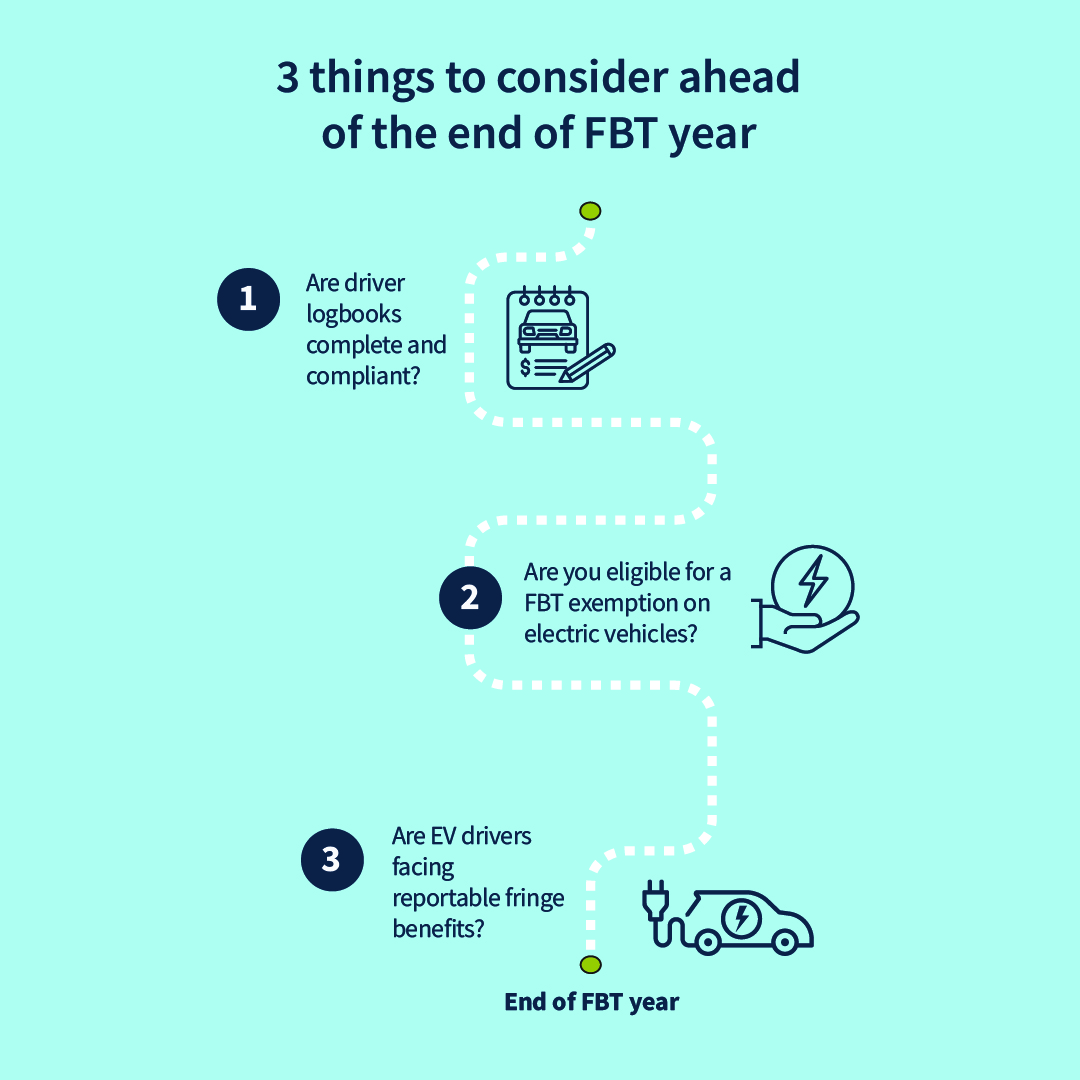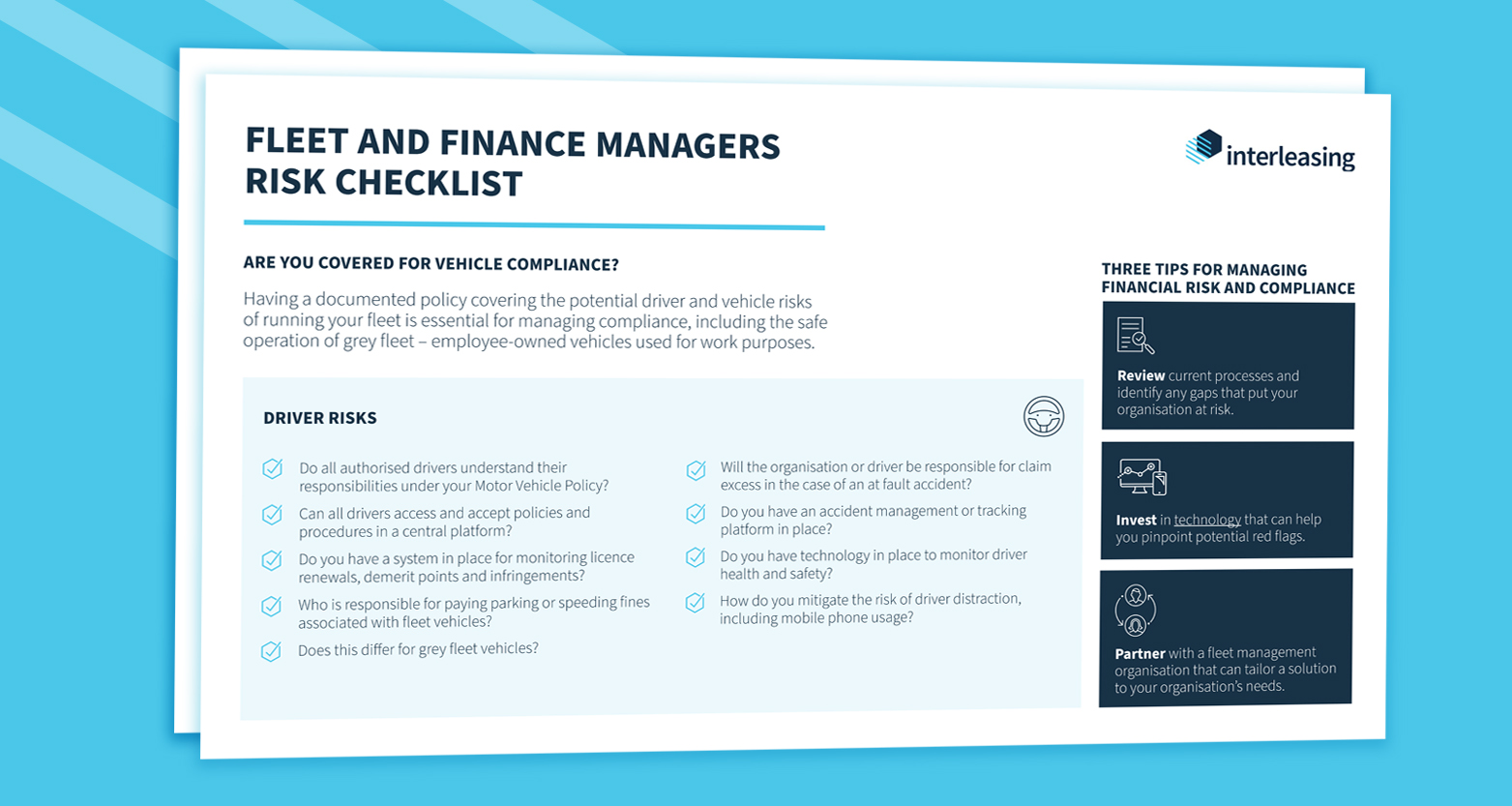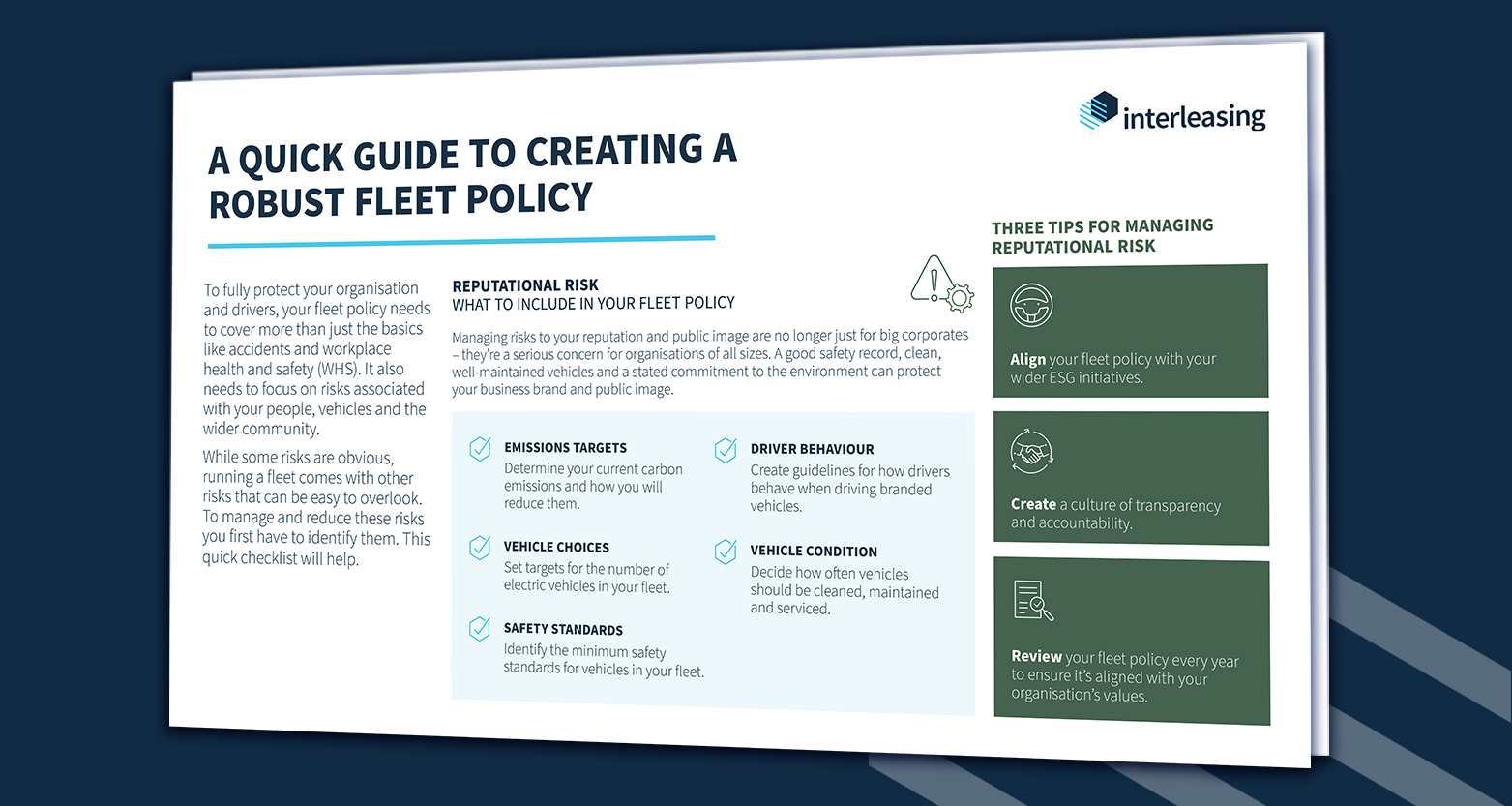
The end of fringe benefits tax year (EOFBTY) is fast approaching on 31 March. Here’s how you can make sure you’re ready - and how your fleet management organization (FMO) can help.
Fringe benefits tax (FBT) is a type of tax that employers pay when they provide certain benefits – like cars – to their employees. The FBT year runs from 1 April to 31 March and each year, organisations need to lodge an FBT return with the ATO.
Fleet managers may be involved in data gathering, educating stakeholders and managing the process of FBT reporting for the organisation. Preparing well ahead of time and understanding the latest requirements can help create a better outcome for your organisation, fleet and drivers.
Whether you manage your fleet independently or in partnership with a fleet management organisation (FMO), here are three things you might want to consider before 31 March.

1. Are driver logbooks complete and compliant?
The ATO requires 12 weeks of continuous logbook data to be compliant1, so logbooks can be issued to drivers up until the start of February each year. Provided the data is in line with usual driving patterns, it’s possible for logbooks to roll over into early May for those that are running behind, so you can still maximise any financial and compliance-related benefits – for example an income tax deduction and GST credit for the cost of providing the vehicle.
Communication in the leadup to the FBT deadline is the key to making sure all relevant people in your organisation understand and meet their obligations. Depending on your organisational structure, you may also need to get HR and finance teams involved to provide guidance around the logbook process and requirements.
How your FMO can help:
- Educate drivers and stakeholders on logbook compliance and required standards
- Recommend technology and tools that can assist to make the logbook completion process easier
2. Are you eligible for a FBT exemption on electric vehicles?
With the introduction of discounts on electric vehicles (EVs), the take-up of EVs has increased, and many organisations will be looking at the impact of EVs within their FBT report for the first time this year.
In November 2022, the government introduced new legislation to provide FBT exemptions for certain EVs that are used privately by employees. It’s important to be aware of the legislation and ensure it’s reflected within your organisation’s FBT reporting for any EVs you have had since 1 July 2022. Otherwise, reporting may indicate a FBT liability against a vehicle that is exempt.
To be eligible, a vehicle must be a zero or low emission vehicle, held and used for the first time on or after 1 July 2022, and used by a current employee or their associates. Vehicles that incur luxury car tax are not eligible. Luxury car tax threshold values change depending on the financial year the car was imported, acquired or sold – the current threshold for FY24 is $89,332 for fuel efficient vehicles1.
From 1 April 2025, plug-in hybrid vehicles will no longer be considered zero or low emissions under FBT law.
How your FMO can help:
- Proactively help you manage your reporting obligations with draft or preliminary reports, well ahead of the FBT deadline
- Help with planning so you can maximise opportunities to save on FBT in the future
3. Have you educated EV drivers on reportable fringe benefits?
An employees’ private use of an eligible electric car is exempt from your organisation’s FBT obligations, but the value of this benefit may still be included in employees’ individual FBT calculations. Employers will need to calculate the notional taxable value of benefits associated with each employee’s use of their company-issued EV.
An employee has a reportable fringe benefits amount (RFBA) if the total value of benefits provided is over $2,000 during the FBT year. This amount isn’t added to an employee’s taxable income, however it is used to calculate the Medicare levy, and can also be included for family assistance, child support assessment and a number of other government benefits.
It is essential organisations avoid confusion by taking a proactive approach to educating staff and making drivers aware of these obligations and how they work.
How your FMO can help:
- Educate your organisation and drivers around their individual FBT obligations
- Create stakeholder communication plans to keep everyone accountable
An experienced FMO can provide support and guidance at FBT reporting time and ensure your data and reporting are accurate. To learn more about how we can help your fleet, get in touch today.
1. Australian Tax Office, Luxury Car Tax Rate and Thresholds, May 2023


